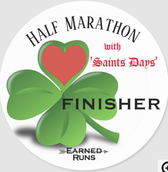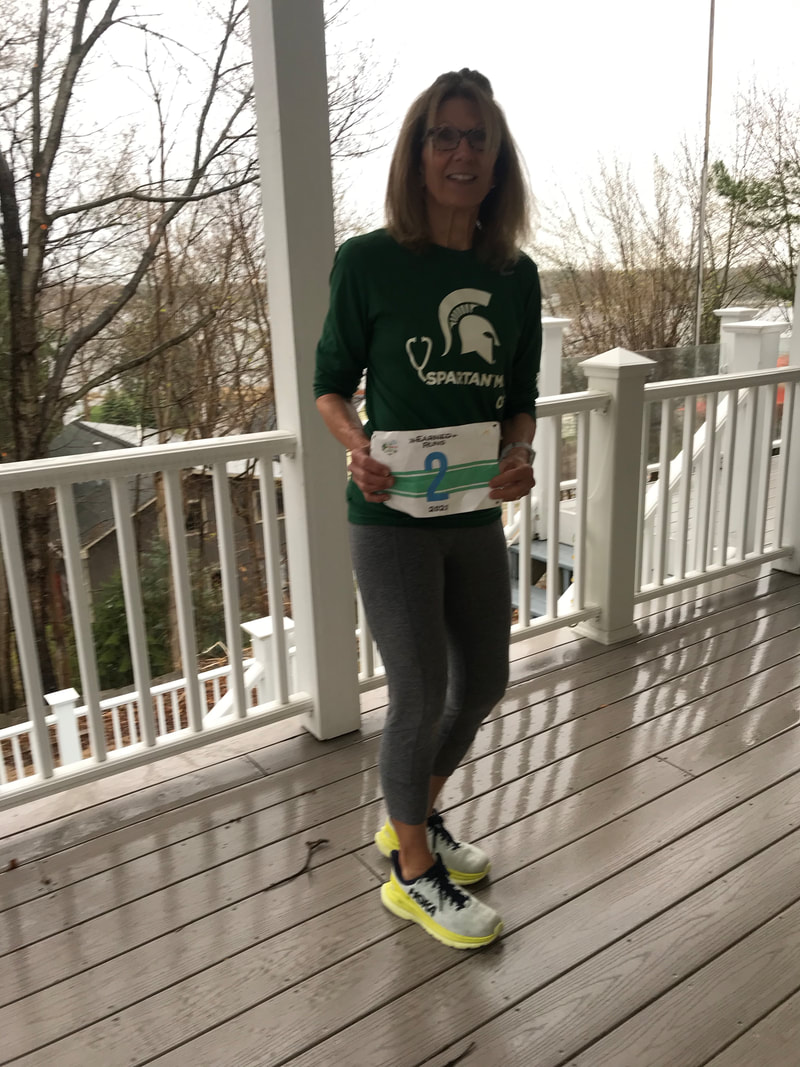BLOG
|
 WEEK 8 HALF MARATHON 2020 with SAINTS DAYS 5k &10K TRAINING PLAN STARTS! At the end of this week a few of you may planning to run or walk a very early St. Patrick’s Day-themed 10K RACE. Most will run later, on the March 13-14 and a few March 20-21 weekends. If the 10K is your GOAL race (you DO NOT plan to continue training for a half marathon) you may be running or walking to just to cross the finish line, or possibly to complete it in a specific length of time. As indicated many times previously (but it’s worth repeating), the EARNED RUNS ‘Saints Days’ walking and running plans do not aim to prepare trainees for speed, especially a personal record (PR), but once you’ve recorded one 10K finish time, a PR is a goal you will be able to consider in a future competition! As a first time 10K runner, back in 1979, I had no race strategy and no idea one would be needed. I had not looked at the course map. I suffered that late August, 95 degree, sunny, and humid day, and nearly developed heat exhaustion. A race strategy needn’t be complicated. One that many runners follow to insure they will not quit mid-race but finish in good form is to resolve to start it comfortably slow and end it with their best effort. The plan is to hold back initially, pick up speed gradually, sustain an increased effort for miles 4 and 5, and dig deeper for the final 1-1.25 miles. Attempt to cover the second half of the race distance, just after passing the mile 3 marker, in less time than it took to complete the first half. This type of pacing is referred to as a ‘negative split’. The benefit of starting at a slower than normal pace, in spite of other runners/walkers enthusiastically passing by on either side, is a strong finish. As you pick up speed in the last half of the race, you’re likely to be moving past some, possibly many of these same people. The strategy has worked for me in both walk and run events. I wish I had known about it in 1979. Those who are training to run, run/walk, or walk the HALF MARATHON later in the spring, will treat this 10K as a ‘tune-up’ event rather than a goal race. You’ll plan to hold back a bit, maintain a steady pace, and not push hard with an all-out effort at the finish. For this reason, there wasn’t a scheduled taper or a ‘peak’ for this distance. If you don’t remember the BLOG post that introduced the running and walking plans and explained the concept of training or “tune-up” races (linked to an online Runner’s World article) you might check it out. There was a similar discussion in advance of the 5k St. Valentine’s Day tune-up race as well. The advice given in that article was to run the ‘tune-up’ 10K evenly all the way through, finishing as if you felt you could have run faster. This race is about gently testing yourself before the half marathon. It provides you with a ‘practice’ race that should build confidence. In other words, easy-does-it, especially at the start. Don’t blast out of the gate and wither before the end. Also, there’s a piece by Kelly O'Mara posted by PodiumRunner.com that provides more explanation. Those not racing for a few weeks might begin to think about a race strategy and practice it mentally as you run or walk the end-of-the-week long runs. RUN & MOVE HAPPY!
0 Comments
Your comment will be posted after it is approved.
Leave a Reply. |
BRIDGE TO PHYSICAL SELF
Running, walking, and fitness activities enable us to experience our physical selves in a world mostly accessed through use of fingers on a mobile device. AuthorEARNED RUNS is edited and authored by me, runner and founder. In 1978 I began participating in 10K road races before 5Ks were common. I've been a dietitian, practiced and taught clinical pathology, and been involved with research that utilized pathology. I am fascinated with understanding the origins of disease as well as health and longevity. Archives
November 2023
CategoriesNew! Search Box
Earned Runs is now searchable! Check it out...
|


 RSS Feed
RSS Feed